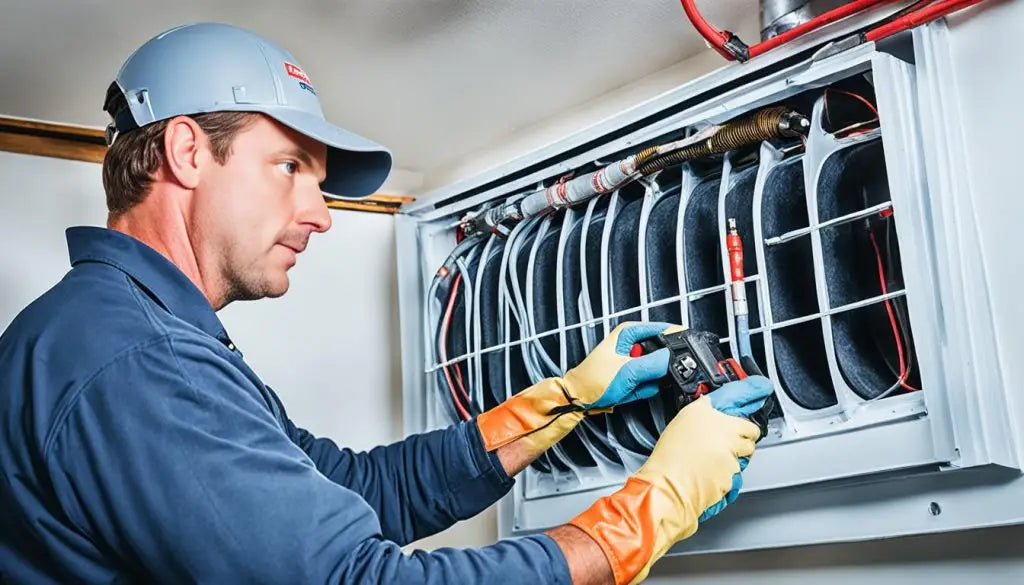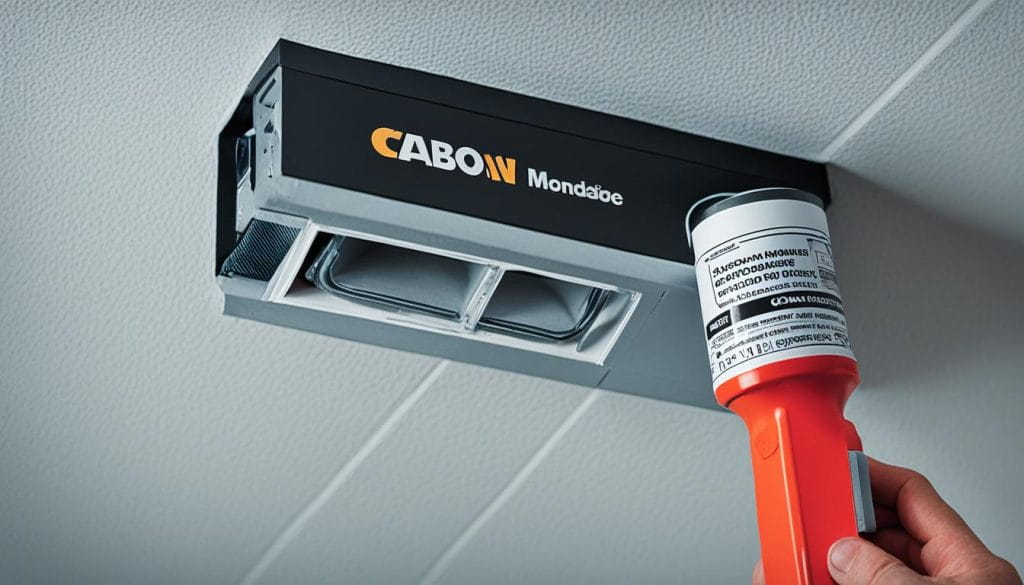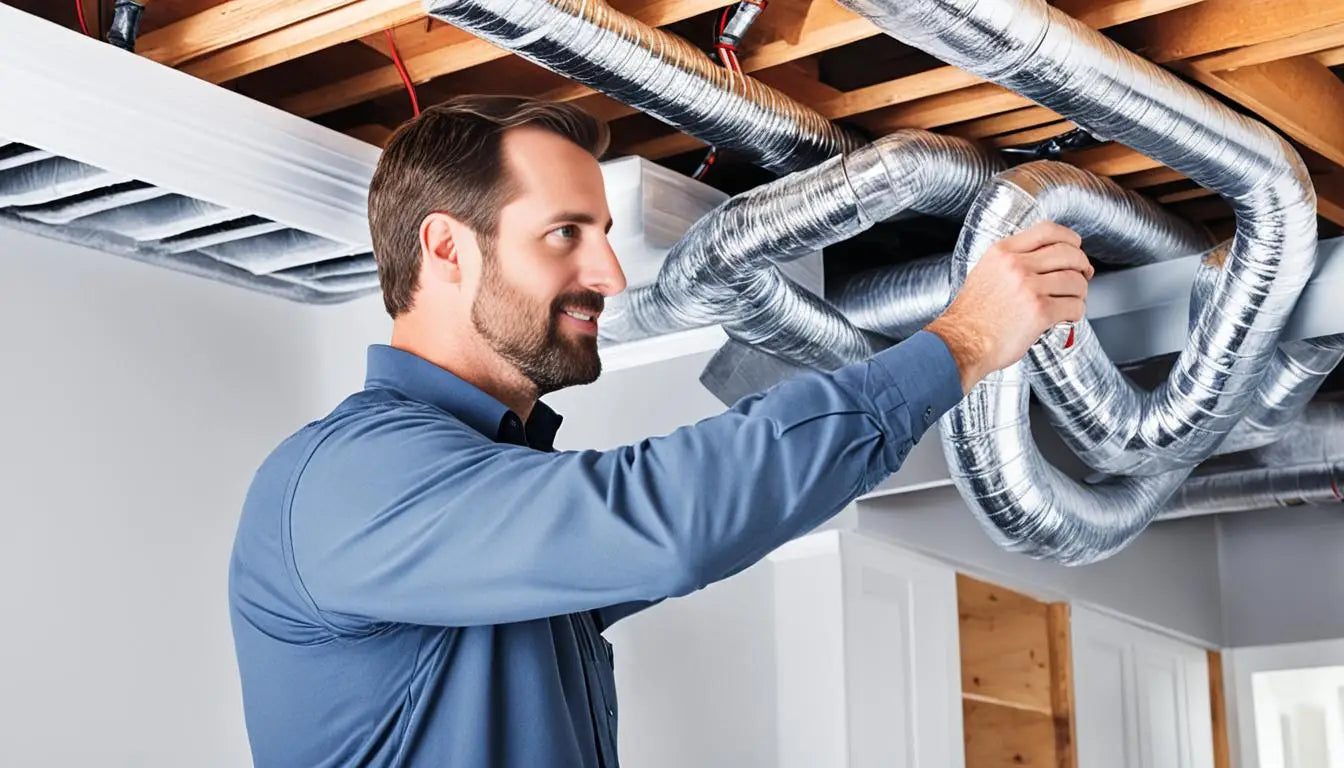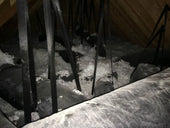The state of your home's HVAC ductwork might be quietly hiking up your energy bills and hurting the comfort indoors. With leaky ducts that allow heated air to escape, you could be spending hundreds more every year on heating and cooling. So, sealing and insulating these ducts becomes a key, though often ignored, part of keeping your home well-maintained. By making sure your HVAC system is well insulated, you're not only ensuring it runs smoothly. You're also adopting a smart way to save energy and enhance your heating and cooling system's efficiency. Plus, energy-efficient homes today are leading by example. They put duct systems in places where the air is controlled and use advanced sealing techniques like the "trunk and branch" and "radial" methods.
Insulating your HVAC ducts is a proactive step towards achieving the energy efficiency seen in modern homes. It also greatly improves the comfort and air quality of our homes. While it may first seem costly to insulate your ducts, our tips on how to seal HVAC ducts explain how simple and crucial it is. Getting your ducts well-sealed and insulated is perhaps the most important action you can take this year. It makes your home more comfortable, cost-effective, and safe. Including CO detectors to check CO levels from fuel-burning appliances adds an extra layer of security.
Key Takeaways
- Insulating your HVAC ductwork can save a lot of money and make your system more efficient.
- Using advanced duct sealing methods increases indoor comfort and helps conserve energy.
- Adding thermal insulation to ducts makes your home safer with CO detectors for potential hazards.
- Regularly using duct sealant keeps the air quality up and prevents wasting energy.
- Following the best practices for insulating ducts supports eco-friendly goals and modernizes your home.
The Importance of HVAC Efficiency and Duct Sealing
Making sure your HVAC system is efficient through good duct sealing is key for many reasons. It greatly increases comfort at home, protects the air we breathe inside, avoids dangers, saves money, and helps the environment. These benefits show why duct sealing is critical for keeping HVAC systems in top shape.
Improving Home Comfort
Being comfortable at home depends on consistent temperatures, which ductwork affects. About 20-30% of air escapes from leaks in ducts, causing uneven heating or cooling. Sealing these ducts fixes this, making your home comfortable all year.
Enhancing Indoor Air Quality
Duct sealing also improves the air in your house. Unsealed ducts let in pollutants. Sealed ducts block these pollutants, keeping the air clean and healthy for everyone living there.
Avoiding Safety Hazards
Sealing ducts well reduces safety risks, especially from appliances that burn fuel. It stops dangerous gases like carbon monoxide from entering your home, making it safer.
Cost Savings with Duct Efficiency
Sealing ducts can save you a lot of money on your bills. It lowers the energy needed to keep your home at the right temperature. This means your HVAC works less hard, reducing the need for costly repairs or early replacements.
Environmental Benefits
Duct sealing is also good for the planet. It makes your HVAC system more efficient and reduces harmful emissions. This lessens your home's impact on the environment, helping everyone.
Choosing to enhance your ductwork with a reliable company like HAS-Vent brings financial and quality benefits for homeowners. It also supports environmental efforts, making it a smart choice for those looking to make a difference.
Understanding Your Home’s Duct System
Learning about your home's duct system is key to saving energy and keeping comfy. The ducts in a house are hidden but very important. They spread air around, which affects how much energy you use and how your home feels.
Composition of Ductwork
Homes have a system of tubes for moving warm or cool air to different rooms. These tubes can be hard metal or flexible ducts, or both. Flexible ducts are easy to put in but can block air if not done right4. Metal ducts last longer and are strong, but they're harder to install and cost more at first. Knowing what your ducts are made of helps you keep them in good shape for a long time.
Minimising Energy Loss through Proper Duct Maintenance
Looking after your ducts means more than cleaning them. It's about making the whole system work well to stop energy from being wasted. In most homes, half of the energy used goes to heating and cooling. A lot of this energy can be lost through leaks or heat escaping from the ducts. It's really important to fix ducts in places like attics where losing energy costs you more. Putting insulation in these spots can help stop energy loss and problems with moisture too.
Ducts that are too long can also make the system work harder, which uses more energy and makes heating or cooling less effective. Fixing issues with duct connections, insulation, and length can make a big difference. It's also a good idea to hire experts with the right qualifications to check for other problems and fix them.
| Aspect | Impact on Efficiency | Improvement Action |
|---|---|---|
| Insulation in unconditioned spaces | Energy loss, condensation | Add or improve insulation |
| Excess duct length | Reduced airflow | Modify duct layout |
| Disconnected ducts | Leakage and energy waste | Seal and reconnect ducts |
| Poorly supported flex ducts | Increased resistance to airflow | Properly secure and streamline ducts |
Taking these steps not only makes your duct system use energy better but also helps your HVAC units last longer by reducing their workload. The aim is to make your duct system work well with your energy-saving plans. This leads to saving money and making your home more comfortable.
Strategies for Designing and Installing Efficient Duct Systems
Designing efficient duct systems is key for HVAC efficiency and home comfort. Ducts should be placed in areas where temperature is controlled. This reduces heat loss and saves money over time. Think about using "trunk and branch" or "radial" layouts because they work well in these areas. Making sure that air flows well, especially in basements turned into living spaces, is also crucial.
| Feature | Benefit | Material/Configuration | Professional Recommendation |
|---|---|---|---|
| Duct Placement in Conditioned Spaces | Reduces Heat Loss | Trunk and Branch/Radial | Qualified Professional Installation |
| Sealing with Duct Mastic | Long-Term Durability | Duct Mastic | Avoid Cloth-Backed, Rubber Adhesive Tape |
| Insulation in Basements | Protects Against Pipe Freezing | Basement Wall and Duct Insulation | Professional Installation of Registers |
| Vapor Barrier on Cooling Ducts | Prevents Moisture Condensation | Well-Sealed Vapor Barrier | Monitor with Carbon Monoxide Detector |
Good sealing and insulation are vital when installing duct systems. They help avoid energy loss. Leaking ducts can lead to big costs, so use strong sealants like duct mastic.Staying updated with duct system design standards ensures efficient airflow and comfortable homes.
Changing your basement into a living space needs careful planning. It's advised to insulate the ducts and walls to prevent pipes from freezing. A well-sealed vapor barrier is essential too, preventing moisture problems and ensuring clean air.
Safety first with HVAC systems. A carbon monoxide monitor is crucial in homes with gas appliances. It alerts to dangerous CO levels. Whether it's small fixes or big updates, always use qualified professionals for safety and efficiency.
In conclusion, follow these strategies for efficient duct systems to maintain high HVAC performance.
Key Techniques for Maintaining and Upgrading Existing Ductwork
Effective HVAC systems rely on good ductwork. By taking care of maintaining ductwork and upgrading ductwork well, homeowners keep their systems running smoothly. Spotting duct leaks, sealing them, and insulating ducts are key. These steps reduce energy loss and boost home comfort.
Identifying and Sealing Duct Leaks
Finding leaks in ducts is vital for saving energy. Leaks cause significant heat loss, making heating and cooling more expensive. Duct mastic is the best fix for leaks. It's more reliable than cloth-backed duct tape. Adding advanced tools helps find and fix airflow problems quickly.
Rooms with poor air return can improve with new grilles or jumper ducts.
Insulating Ducts in Unconditioned Spaces
Insulating ducts in places like basements saves money, as it's cost-effective. A sturdy vapour barrier prevents these areas from getting too cool. New homes often have ducts in heated areas to keep heat loss low.
For basements being redone, adding both supply and return registers boosts system efficiency. A vapour barrier is essential against moisture, especially for ducts in cooling systems. Carbon monoxide detectors are key for safety with fuel appliances, a rule in many places. These steps make homes warmer, cheaper to run.
Sealing Insulating HVAC Ducts: A DIY Guide
Doing a DIY project to seal your ducts is cost-efficient and boosts your HVAC's efficiency. Caulking and weatherstripping quickly pay off, often in under a year. It's an excellent project for homeowners.
Step-by-Step Duct Sealing
It's vital to follow a step-by-step method for sealing ducts. This process finds and fixes air leaks, cutting heating and cooling costs. Leaks not only raise your energy bills but also cause moisture issues. These issues can affect the health of people living in your home and its structure.
Start by inspecting your ductwork thoroughly.
Here's how to effectively seal your ducts:
- Identify which parts of the ductwork need work.
- Use top-notch air duct sealant products to seal leaks.
- Ensure safety by using fire-resistant materials near fireplaces, furnaces, and vents.
It's smart to aim for less air leakage and controlled ventilation.
Choosing the Right Air Duct Sealant Products
Finding the right air duct sealant is crucial. You'll find mastic and foil tape among the options. Your choice depends on where your ductwork is and its type. Make sure the products fit your ducts and follow safety standards.
When picking sealants, think about:
- How easy they are to apply
- How well they last and adapt over time
- Their resistance to heat and chemicals
Applying Thermal Insulation for Ducts
Along with sealing your ducts, it's important to properly insulate them. This reduces heat flow through the building's outer layer. Paying attention to detail is key when insulating to avoid mistakes.
Insulation should be done like this:
- Measure and cut insulation material to fit your ductwork.
- Wrap the insulation tight around ducts, especially in spaces like attics and basements.
- Use tape or mastic to seal the insulation edges.
If all of this seems too complex, consider getting an energy assessor to check your home's air tightness. They can give you a detailed analysis of your ductwork and advice specific to your home.
Professional Duct Sealing Techniques and When to Hire an Expert
Thinking about your home's heating and cooling system, professional duct sealing is key to saving money and being energy efficient. Sometimes, DIY just won't cut it. This is when hiring duct sealing experts becomes crucial for top performance and safety.
Experts have plenty of smart ways to seal every crack and seam perfectly. This detailed work cuts drafts and makes your system work better, saving up to 20% on bills. Plus, for older homes with outdated windows, they suggest ways to save even more energy.
There's strong data backing up the need for such skilled work. Properly sealed ducts, especially in spaces like attics, make your air healthier and prevent HVAC overload.
Ducts are made of different materials, like rust-proof steel and insulating panels. Only those who know duct sealing techniques can properly use the right sealants and tests to ensure everything's A-OK.
Certified experts can check your home's air tightness and suggest how to improve it. This, with professional duct sealing, protects against energy loss.

Wondering if you need a pro for your ducts? If they're hard to get to, in cool or warm spaces, or really damaged, you definitely need an expert. Also, pros know how to meet industry insulation standards.
- Deep knowledge of all materials, including rare aluminium ducts, is essential for long-lasting results.
- It's important to check airflow and do pressure balance tests for a good duct seal.
- Experts have special tools like flow hoods for measuring airflow, which is a big advantage.
In summary, while DIY projects can be tempting, the tricky parts of duct sealing are best left to the experts. Hiring them ensures your ductwork is properly fixed for energy savings today and keeps your home in good shape for the future.
Common Mistakes to Avoid in HVAC Duct Insulation
Insulating your HVAC ducts correctly is more than just picking the right materials. It involves careful planning and attention to detail. Recognising potential mistakes is as essential as the insulation process itself. In this guide, we'll discuss common errors and how to avoid them.
Mistakes in duct insulation can affect your heating and cooling systems' efficiency. We've prepared tips to help keep your insulation efforts on the right path, avoiding common pitfalls.
- Overlooking Leaks Before Insulation: A major mistake is not fixing leaks in ducts before insulating them. It's crucial to make sure ducts are sealed tight for effective insulation.
- Cutting Corners on Material Quality: Using low-quality insulation might save money now, but it leads to energy loss and extra costs later on.
- Ignoring Manufacturer's Instructions: Every insulation material has guidelines for its use. Ignoring these can reduce insulation effectiveness, so it's key to follow them closely.
- Improper Sealing Post-Insulation: After insulating, it's vital to seal everything perfectly. Neglecting this can cause air and energy to escape, causing problems.
- Incorrect Insulation Thickness: Choosing the wrong thickness for your insulation won't help you save energy. It's important to pick the right thickness based on your needs.
To avoid these duct insulation mistakes,
The Role of Carbon Monoxide Detectors in Duct System Safety
Carbon monoxide (CO) detectors are a big step forward in keeping homes safe. They are crucial for protecting against dangerous CO emissions in duct systems. Making sure you have CO detectors at home helps keep the air safe to breathe.
Duct systems run all through a home and need regular checks. This keeps them working well and safely. Properly maintaining your ducts saves energy and money, as leaks can be costly. Sealing these ducts, especially in places like attics, is key.
Poorly kept ductwork can lead to CO building up. It's smart to install CO detectors if you use fuel-burning devices. They warn you of CO, helping prevent health risks. Having ducts in heated parts of the house also helps stop CO from forming.
For sealing ducts, use duct mastic or tapes that can handle the heat. Rubber adhesive tape doesn't cut it against CO risks. CO detectors are vital. They bring peace of mind and protect from the dangers of CO.
The significance of CO detectors stretches beyond mere compliance with safety protocols; it is about preserving the sanctity of a healthy and hazard-free home environment.
Good ductwork and safety tips include:
- Check your ducts regularly for leaks or problems.
- Test if your home has enough return air flow by doing a simple door test.
- Use professionals for duct work to ensure quality.
- Remember, CO detectors are a must in homes, especially if your heating could produce CO.
Here is a table comparing ductwork issues and the benefits of CO detectors.
| Ductwork Deficiencies | Impact on Costs and Health Safety | Carbon Monoxide Detectors |
|---|---|---|
| Leaks in unheated spaces | Annual increase in heating/cooling bills | Prevents cost surges by alerting to CO levels |
| Inadequate duct insulation | May lead to colder basement areas, higher heating needs | Ensures safety when heating needs rise |
| Unsealed ducts in attics/crawlspaces | Crucial to prevent air and CO leakage | Mitigates risk from potential CO infiltration |

Finally, stressing the importance of CO detectors is about real action for safety. It's essential for duct system safety and avoiding the hidden risks of carbon monoxide.
Conclusion
Making your HVAC system more efficient is not just about saving energy. It also improves your home's comfort and safety. At the same time, it helps protect our environment. Poorly sealed or insulated ducts can significantly increase your energy bills. This happens because they let heated air escape into spaces that don't need heating. This can add hundreds of dollars to your yearly heating and cooling costs. However, by sealing and insulating ducts in unconditioned spaces, you can save money and enjoy a more consistent temperature in your home.
Modern homes are designed to reduce heat loss by keeping duct systems inside conditioned spaces. This helps maintain a steady temperature and pressure in the house. However, even well-sealed and insulated ducts might let some heat escape. That's why it's crucial to use strong sealants like duct mastic. It's also important to hire professionals to ensure your ducts are insulated properly. The Lawrence Berkeley National Laboratory highlights how better insulation can lower energy costs. They suggest increasing ductwork insulation to an R-8 level to see significant savings.
In summary, it's vital to have carbon monoxide detectors in new buildings. This ensures safety against dangers that can come from faulty HVAC systems. This article provides a wealth of information and discussions on how best to seal and insulate ducts. It helps you make informed decisions for maintaining and improving your HVAC system. In conclusion, having a well-sealed and insulated duct system is key to a sustainable, energy-efficient home.
FAQ
Why is sealing and insulating HVAC ducts important?
Sealing and insulating HVAC ducts boost energy efficiency. It makes homes more comfortable.
This also improves the air we breathe indoors. It helps avoid risks, saves money, and is better for our planet.
How can I understand my home's duct system?
Learn about your home's ductwork to grasp how it works. Knowing how to maintain it can cut energy waste. It also increases the efficiency of your system.
What are the best practices for designing and installing efficient duct systems?
For efficient duct systems, good airflow and minimal energy loss are key. Achieve this through proper sizing, layout, and insulation.
How can I maintain and upgrade existing ductwork?
To improve ductwork, seal leaks and insulate especially in areas without air control. These steps enhance performance.
Can I seal and insulate HVAC ducts on my own?
You can DIY seal ducts with the right guide. But, for complex issues, consider getting a professional.
What are some common mistakes to avoid in HVAC duct insulation?
Avoid using too little insulation and bad sealing practices. Picking poor materials won't give you the best outcome. Stick to the best methods for success.
How do carbon monoxide detectors contribute to duct system safety?
CO detectors warn us about carbon monoxide, a dangerous gas. They keep our homes safe by monitoring CO levels.





















































